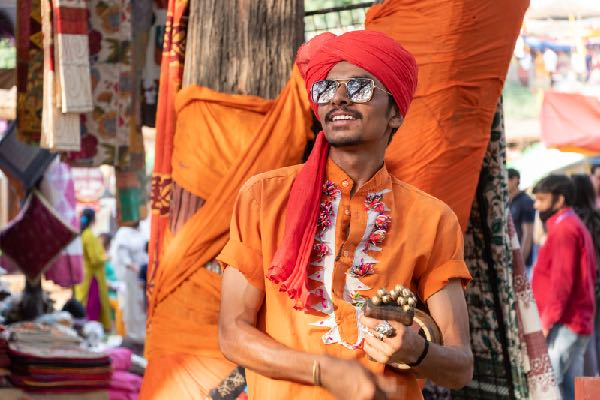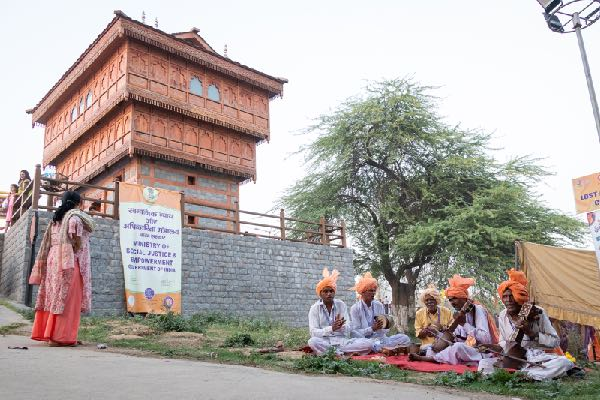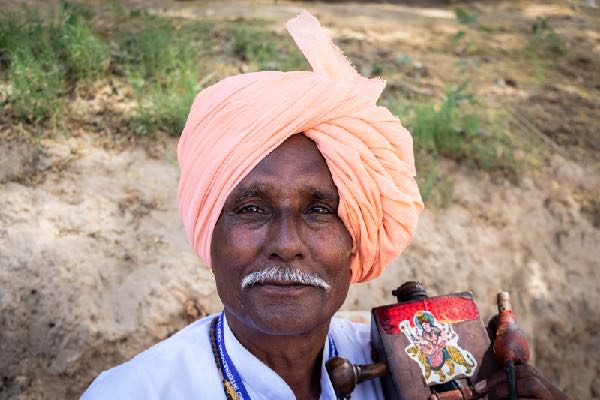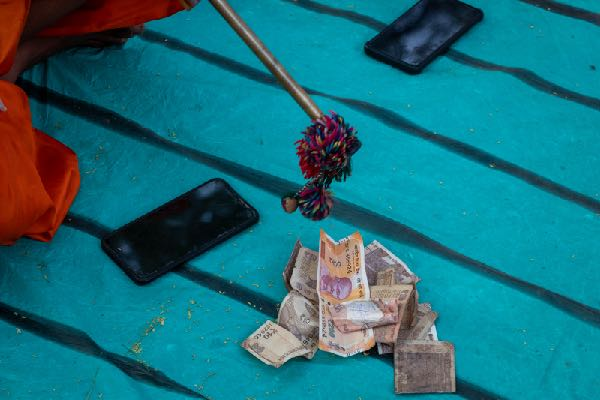A Summer in Surajkund!
The iconic Surajkund Mela came back to life but things were not the same.

After two years of uncertainty induced by the Covid 19 pandemic, the iconic Surajkund Mela came back to life this year. The last fair was held in February 2020. The mela, or fair, is hosted in the lap of Aravalli range, at Faridabad, Haryana. The Surajkund Mela is known to be one of the largest celebrations of Indian culture and folk practices.
Artists and craftsmen from all over the world throng this international crafts fair, to promote crafts-based livelihoods. Usually held in the first fortnight of February, this year the 35th Surajkund International Mela was rescheduled to March 19, till April 4. While the exhibitors were happy to be back at the fair after two long years, the sales were lower because it was too hot for visitors to come to the open air fair. The crafts’ industry has been going through a tough time ever since the Covid 19 pandemic broke. A big fair like Surajkund, it was hoped, would revive their spirits and coffers. However it did not. I documented the emotions of the artisans who came to Surajkund this year and this is what they had to say:

Pinku, 18, one of the youngest members of Bijender Singh Nagada Party from Palwal, performs at the fair. It is his second time here, and he feels happy to get back to performing in front of a live audience. But he realised his seniors were struggling to cope, due to the rise in temperatures, and low footfall of visitors. His group has been performing at Surajkund for the last 25 years. This year was the lowest footfall his group has seen which has affected their enthusiasm deeply.

Surajkund Mela provides an opportunity to more than 1100 artists and craftspersons from across India, and abroad, to showcase their cultural legacies.

“It is not the same as it used to be,” said Arun Nath, 20, from Panipat Been Party. It is his fourth time here at Surajkund. “Earlier, we used to have huge audiences. This helped us to perform with more confidence, as we would get more tips as a token of appreciation. But this time, the heat has taken it all away,” he said.

Visitors take photographs with artists waiting for their performance slots. Every year the mela decides on a theme state and a partner nation. This year, Jammu and Kashmir was the theme state and Uzbekistan the partner nation.

This troupe of folk artists from Haryana, were forced to perform with minimal audiences at the mela.

Premchand Jogi, 62, came with his team of six from Jind, Haryana. theSarangi player said the weather has a crucial role in making such events successful. “It used to happen in February. The perfect time for large gatherings like this. Since, the weather is pleasant then. Everyone wants to step out at that time. But now, it is hot and unbearable. I think this has resisted people from stepping out of their comfort zones to come here.”

Counting the losses. There is greater stress for the artisans and craftsmen who have to curb their aspirations and take whatever is given. They have incurred massive losses in the last two years of the pandemic.

Barren ticket counters during the operational hours of the mela.

A child comforts himself over his guardian’s head during the noon hours at the mela. March 2022 was the hottest March in India since 1900 when records began

Showkat Ahmed Khan, 45, from Srinagar, is an award winning pashmina artist. He has been exhibiting at Surajkund since 2007. “It used to happen in February which was definitely better. But I don’t feel it has affected much. People who were passionate about art and crafts are still visiting us with the same excitement. They are happy to see us after a long time. In terms of business things are satisfactory. He said, adding, “I am proud that this year the mela authority chose my home state as the theme. I am grateful for this opportunity to both Haryana Tourism as well as the people here”.

Vrajesh (L) and Sam (R) at their stall during evening hours at the mela. They belong to Jharkhand and Bihar respectively, both invested their savings to exhibit at the fair. Unfortunately, they have not reached their expected goals this year due to the low footfall. “There wasn’t any scope for profit this time. It was more about surviving through the mela somehow,” recalled Sam.
Folk artists from Kashmir dance to regional tunes at the central performing space during the evening hours at Surajkund. The mela authority had pushed the timings of the fair forward by an hour in the evening, due to the low footfall during the daytime.

Even after the change in timings at the mela, there wasn’t a considerable rise in visitors. Most of the visitors left by four in the evening to avoid rush hour traffic.

Vacated stalls at the Surajkund Mela. Many artists left before the end of the mela witnessing the grim situation

Jalaludeen, 53, a bone carving artist from Lucknow closes his stall after a long day. He has been a regular exhibitor at the fair for the past 25 years. He remembered the days when he didn’t even have the time to have his meals. This year, the situation was totally opposite. He felt the fair was a failure in comparison to the past editions. “I anticipated this situation in advance as I have been coming here for years. It's just that I didn’t want to miss it. Maybe next year if it happens in February, things will get better,” he said.
Ashish Kumar Kataria is an independent multimedia journalist based out of Haryana, India.



